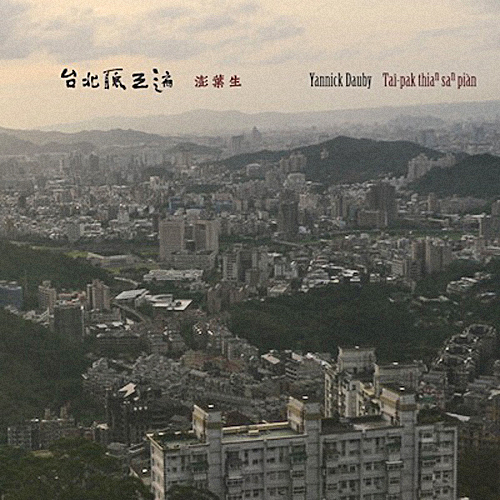Taî-pak thiaⁿ saⁿ piàn. YANNICK DAUBY
(Kalerne 2011)
French composer and theorist Michael Chion has wrote extensive lines about the relation between sound and film in books such as “Film, a Sound Art” and “Audio Vision”.
On “Audio vision” Chion writes about the differences between the visual and acoustic perception, and about how our hearing processes information faster than our sight. He argues that this might has to do with the fact that sound is the medium we use to communicate through verbal language. In the other hand sight is more explorative -like in a scanning process- and this might be the reason why the processing of visual impulses is slower in opposition to the process of hearing which works more like a constant stream of information.
Musique concrete like probably no other form of music and sound art explores the deep and interesting relation between film and sound. The edition of sounds, the possibility of juxtapose sounds and create transitions between them are actions with perceptual consequences in our conscience.
“Taî-pak thiaⁿ saⁿ piàn” is one of the most cinematographic works I remember hearing in a while, as it does a very strong exploration and exploitation of the sound imaginary creating this stream of beautiful, impacting and overwhelming images that we acquire through our ears. The sounds used by Yannick Dauby throughout this release range from musical performances, recordings of voices and incidental sounds. Three key elements of cinema that help adding to this work a very strong visual and narrative character.
The first piece “Nous, les défunts” (Us, the defunct) is mostly built with sounds of fireworks, insects and singing and instrumented music that throughout the piece are presented separately but that at the end are juxtaposed to create this sublime overwhelming experience of strong emotionality and beautiful imaginary.
“Taipei 2030”, the second piece, is more environmental through the beginning while through the middle is more about motion and movement: one could guess that here some of the recordings were captured inside moving vehicles and others taken from vehicles passing by. When edited they create a illusion of movement vividly depicted . The sound of cicadas persist from piece number one, becoming the unification element though the release. Cicadas means summertime, means high temperatures and this is something that is immanent to this work. The heat.
“Ketagalan” is a piece that again explores transportation but in a complete different way. The subway seems to be the element of cohesion although the layering and juxtaposing of sounds is the most valuable element. The social and cultural content found in the metro through the different experiences and background of the riders help the composer to create this beautiful and dreamlike experience. The listener have the chance to travel in the subway and access a variety of sound images in a way the subway becomes not only a medium of transportation but a medium for a more cultural, social and personal exploration.
In addition to being a musique concrete composition, “Taî-pak thiaⁿ saⁿ piàn” is an acoustic film, a series of images and scenarios with a very strong emotional content where a narrative is established through
the exploration of the casual and reduced hearing.
This is a very successful work that opens the door to phenomenological and artistic reflections on the audio visual field and in particular on the relation between cinema and sound art / music; “Taî-pak thiaⁿ saⁿ piàn” rewards the listener with a very strong perceptual experience into a universe of images of extreme beauty and profound meaning.
-Alan Smithee


